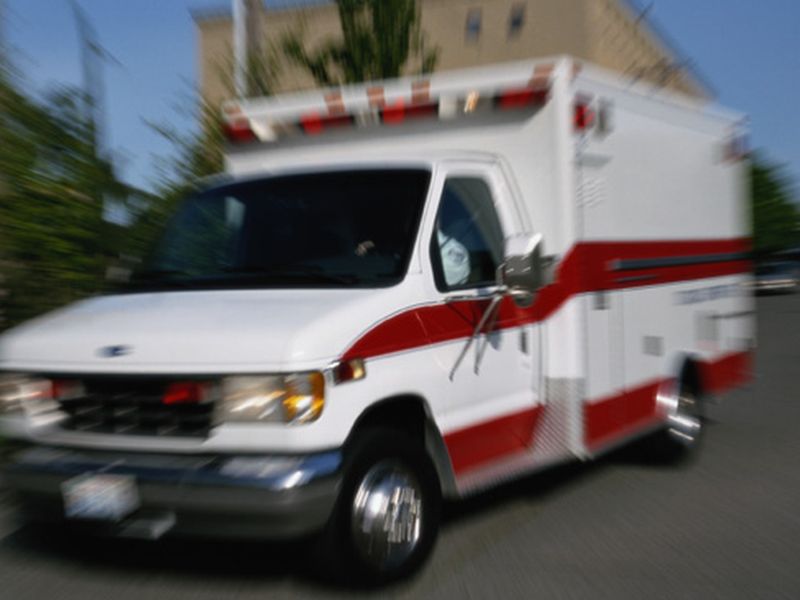
For cardiac arrest patients with what's called a "nonshockable" rhythm, cooling the body almost doubles the odds they'll have good brain function if they survive, researchers have found.
A nonshockable rhythm means the heart has stopped and there is no electrical activity (asystole) or someone still has electrical activity but there's no blood to pump through the heart (pulseless electrical activity).
"The prognosis for both is similar and terrible," said Dr. John Osborne, an American Heart Association spokesman and director of cardiology at State of the Heart Cardiology in Dallas.
Osborne said cooling ("therapeutic hypothermia") is already used when people are in a coma but had a shockable rhythm because it helps protect brain function. He said the treatment is available in most hospitals. But what hasn't been known is if the treatment would make a difference for people who had nonshockable rhythms.
So nearly 600 people who had a nonshockable rhythm were included in this study. The patients were alive but in a coma when they reached the hospital. Half received medical cooling for 24 hours and the other half received standard care.
"This study showed a very positive effect from this very simple, straightforward approach to therapeutic hypothermia. Half of those who survived had a pretty good neurological outcome, and that's a big advance," Osborne said. He wasn't involved in the research but reviewed the findings.
The researchers cooled patients' bodies to 91.4 degrees Fahrenheit (33 Celsius). Normal body temperature is 98.6 degrees F.
The study's lead author, Dr. Jean Baptiste Lascarrou, said cooling helps to prevent brain damage from a loss of blood flow to the brain.
Lascarrou is from the Centre Hospitalier Universitaire in Nantes, France.
He said challenges involved in administering therapeutic hypothermia include controlling shivering and managing mechanical ventilation (machine breathing).
The average age of those in the study was 67. About two-thirds were male. More than half of the study participants had chronic heart disease and about one-third had chronic lung disease.
Cardiac arrest occurred at home for about half of the patients. Around one-quarter collapsed in public, and another quarter occurred in the hospital. A bystander witnessed the cardiac arrest in more than 90% of the cases, and two-thirds were given CPR. Cardiac arrest occurs when the heart stops beating. It differs from a heart attack, in which blood flow to the heart is blocked.
The researchers randomly selected patients to receive either cooling or usual treatment.
The 90-day death rate was high, which is expected, Osborne said. Eighty-one percent of the hypothermia group died, while 83% of the usual-care group died. The difference wasn't statistically significant.
The big difference was seen in the group of survivors who had good neurological function 90 days later. Over 10% of those who received cooling had good neurological function at 90 days. A good outcome was defined as a "cerebral performance category" score of 1 or 2. The scores are between 1 and 5, with higher numbers representing worse outcomes.
In the usual-care group, less than 6% had a score of 1 or 2. Lascarrou said a score of 1 was normal activity. Someone with that score would probably be able to work. A score of 2 meant that someone could function in their daily lives and would likely be able to work, given the right environment.
Lascarrou said the study findings showed that "we must cool [cardiac arrest] patients, especially those with a poor prognosis." He said the researchers must now figure out how to optimize the cooling, adjusting such factors as the duration of cooling and the best speed for rewarming.
Osborne said he suspects that therapeutic hypothermia for patients with a nonshockable rhythm will likely be incorporated into the next CPR and emergency cardiac care guidelines.
Findings from the study were published online Oct. 2 in the New England Journal of Medicine.
Sources: Jean Baptiste Lascarrou, M.D., senior consultant, Centre Hospitalier Universitaire, Nantes, France; John Osborne, M.D., director of cardiology, State of the Heart Cardiology, Dallas, and American Heart Association spokesman; Oct. 2, 2019, New England Journal of Medicine, online.







0 Comments